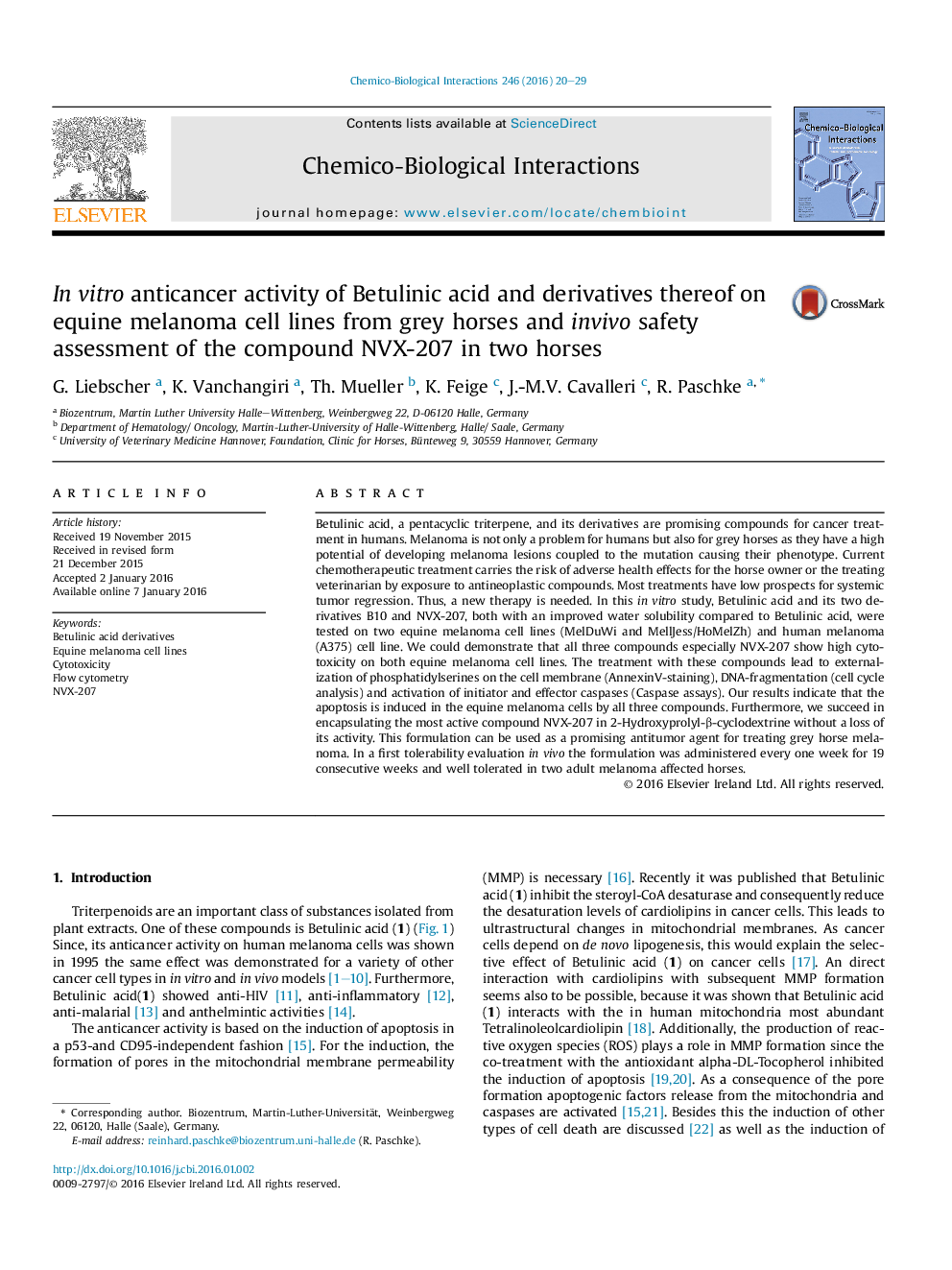| کد مقاله | کد نشریه | سال انتشار | مقاله انگلیسی | نسخه تمام متن |
|---|---|---|---|---|
| 2580064 | 1561595 | 2016 | 10 صفحه PDF | دانلود رایگان |

• All three tested compounds Betulinic acid, B10, NVX-207 induce apoptosis.
• The most active compound NVX-207 was tested in vivo in two grey horses.
• The repeated administration of NVX-207 in two horses show a very good tolerability.
• Neither clinical nor clinicopathological adverse effects of NVX-207 were noted.
• The results open up possibility for first clinical in vivo studies on grey horses.
Betulinic acid, a pentacyclic triterpene, and its derivatives are promising compounds for cancer treatment in humans. Melanoma is not only a problem for humans but also for grey horses as they have a high potential of developing melanoma lesions coupled to the mutation causing their phenotype. Current chemotherapeutic treatment carries the risk of adverse health effects for the horse owner or the treating veterinarian by exposure to antineoplastic compounds. Most treatments have low prospects for systemic tumor regression. Thus, a new therapy is needed. In this in vitro study, Betulinic acid and its two derivatives B10 and NVX-207, both with an improved water solubility compared to Betulinic acid, were tested on two equine melanoma cell lines (MelDuWi and MellJess/HoMelZh) and human melanoma (A375) cell line. We could demonstrate that all three compounds especially NVX-207 show high cytotoxicity on both equine melanoma cell lines. The treatment with these compounds lead to externalization of phosphatidylserines on the cell membrane (AnnexinV-staining), DNA-fragmentation (cell cycle analysis) and activation of initiator and effector caspases (Caspase assays). Our results indicate that the apoptosis is induced in the equine melanoma cells by all three compounds. Furthermore, we succeed in encapsulating the most active compound NVX-207 in 2-Hydroxyprolyl-β-cyclodextrine without a loss of its activity. This formulation can be used as a promising antitumor agent for treating grey horse melanoma. In a first tolerability evaluation in vivo the formulation was administered every one week for 19 consecutive weeks and well tolerated in two adult melanoma affected horses.
Figure optionsDownload as PowerPoint slide
Journal: Chemico-Biological Interactions - Volume 246, 25 February 2016, Pages 20–29